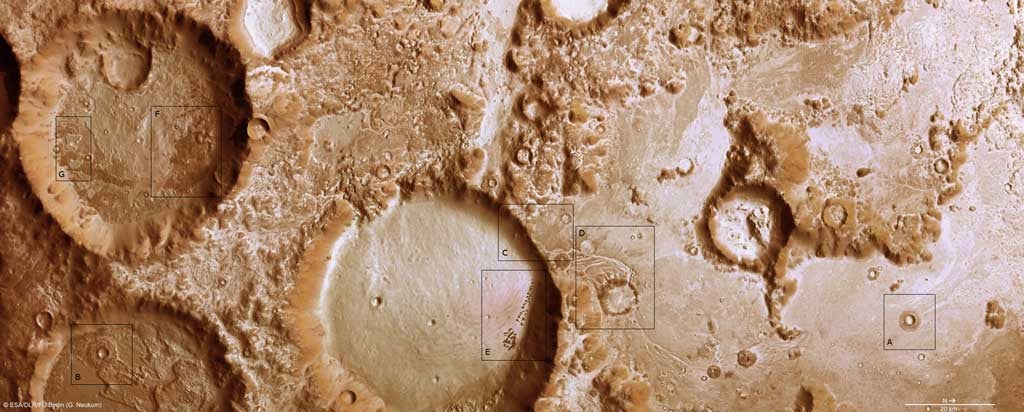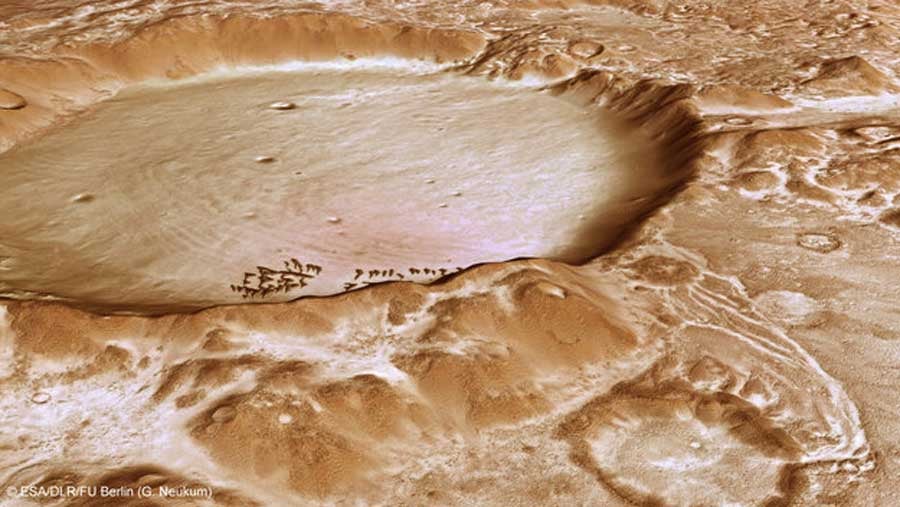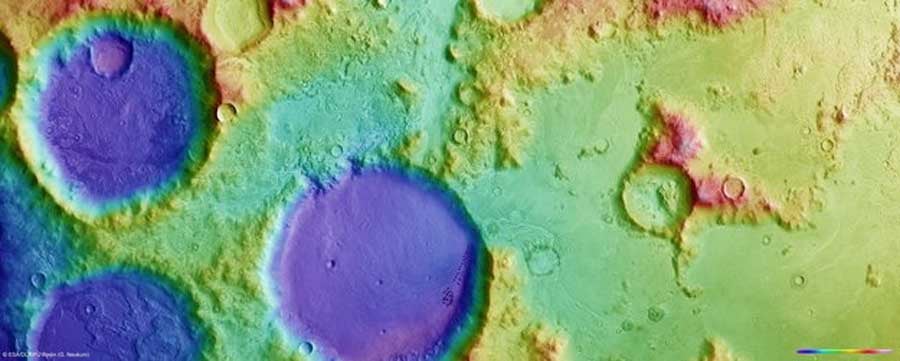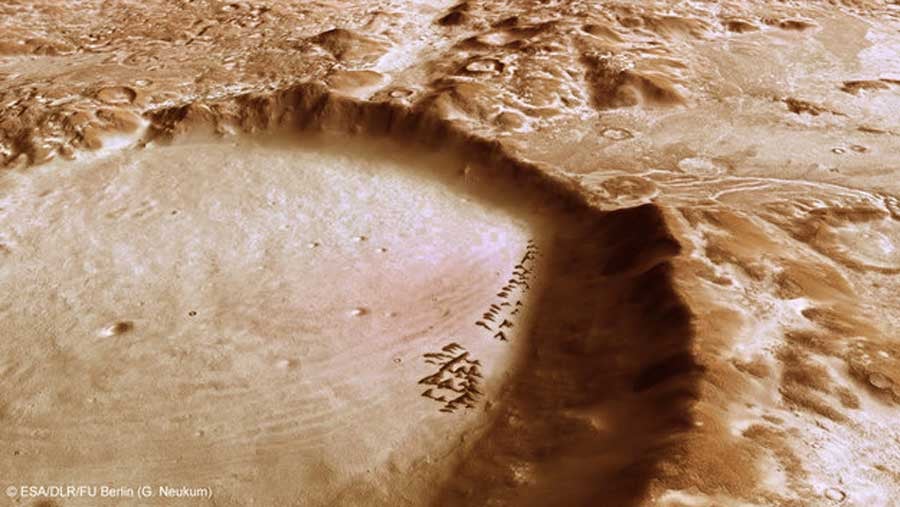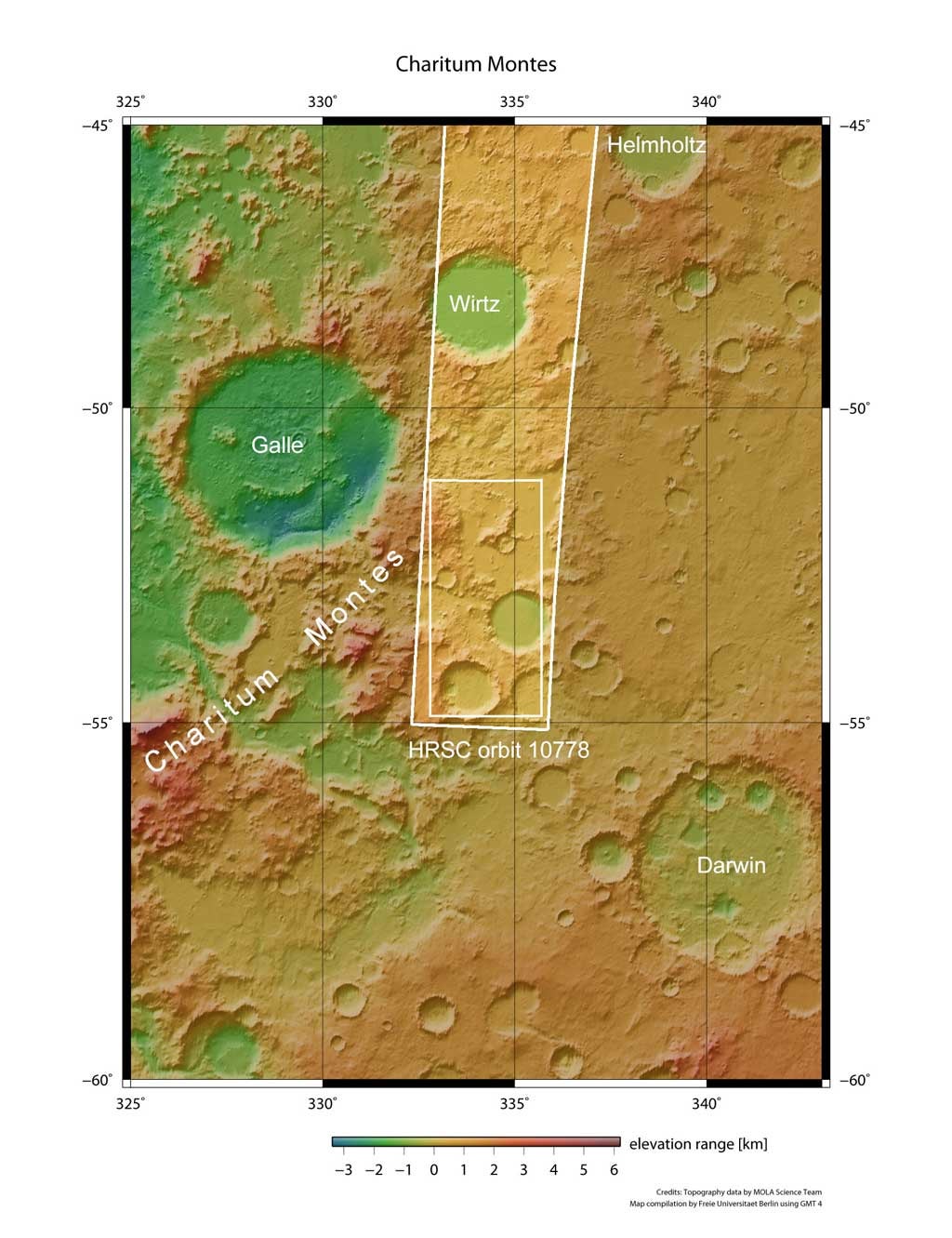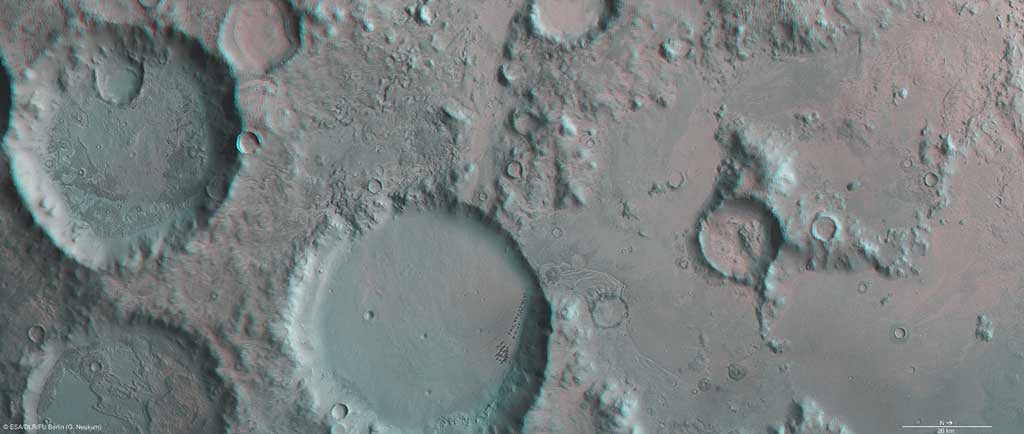The brighter features, giving the image an ethereal winter-like feel in the color images, are surfaces covered with seasonal carbon-dioxide frost.
The images in this release all show the region’s old and highly sculpted terrain, pockmarked with many large craters, all of which have been substantially filled in. The whole region is dusted with brighter carbon-dioxide frost.
The ejecta surrounding pedestal craters form erosion-resistant layers, meaning that the immediate vicinity around the crater erodes more slowly than the surrounding terrain. The resistant ejecta layer is largely untouched, forming the pedestal.
In the center of the 2-D images and dominating the perspective images is a crater some 30 miles (50km) wide filled with thick sedimentary deposits. These deposits appear to have been introduced through one of several breaches in the northern crater rim (Box C in the annotated image).
Within the large crater, near to where the breach (Box C) in the crater wall occurred, though unconnected to this event, we can also see a small dune field (Box E).
A region of significant interest to scientists lies within the large crater toward the top left of the first image (Box F). This crater shows a diverse range of filling material, with layers of varying color and texture. The uppermost layer appears to be bright and smooth, taking on the appearance of a relatively thin blanket with some impact craters. This layer interfaces with the underlying darker layer via some sharply defined edges, possibly as a result of erosion. The underlying darker material has a much rougher and mottled appearance, and planetary geologists are still studying possible causes.
The complexity and diversity of some areas in this winter wonderland would doubtless give Father Christmas a hard time in finding somewhere safe to land, but images like these are giving planetary geologists yet another fascinating region of the Red Planet to study.

